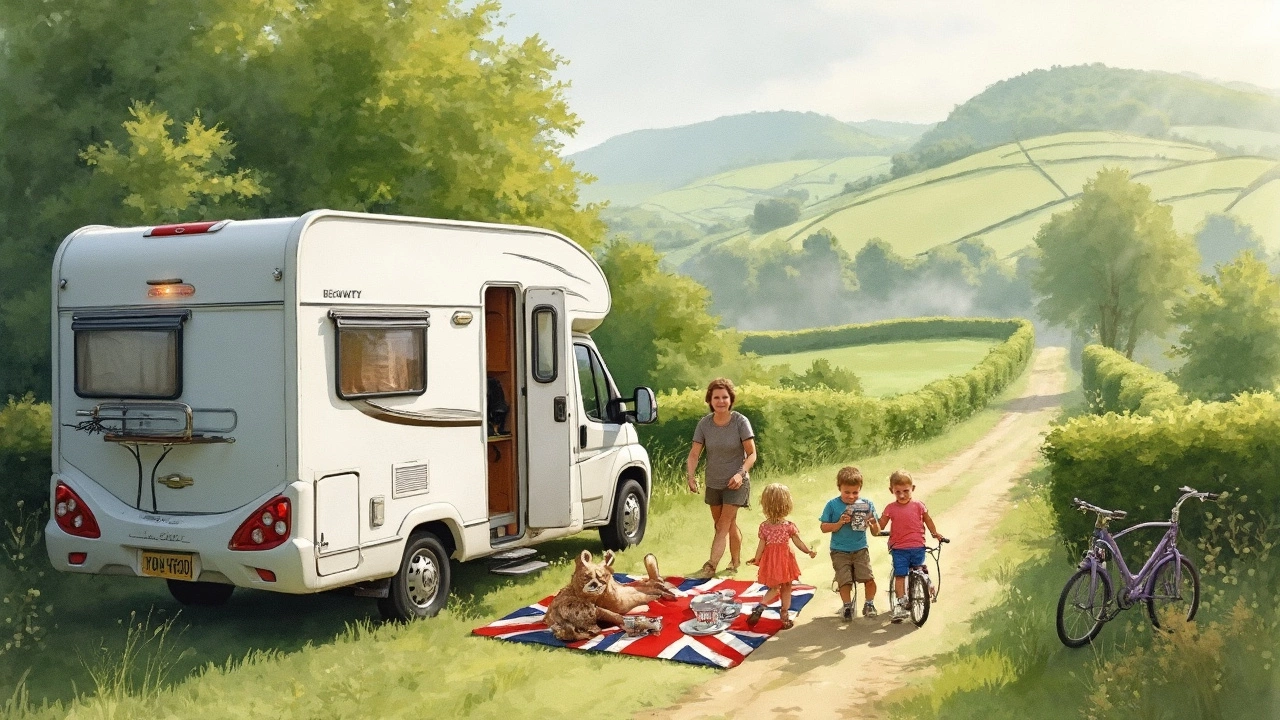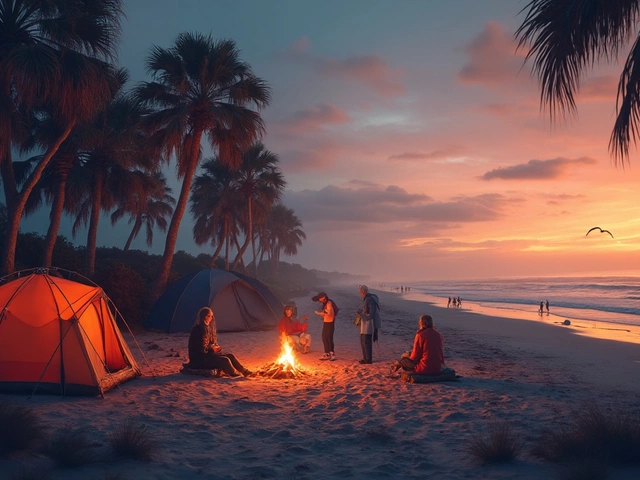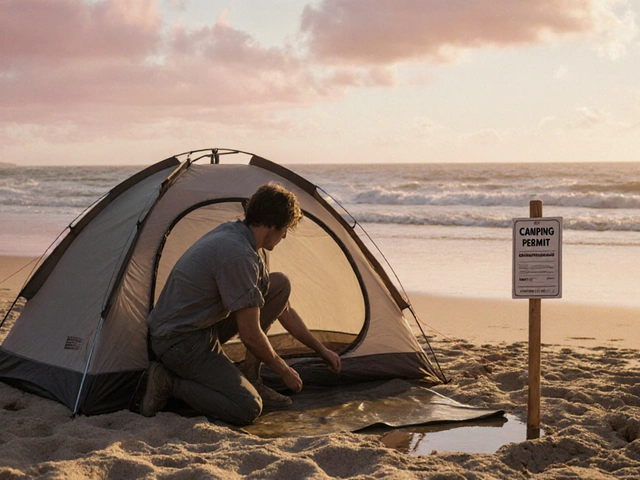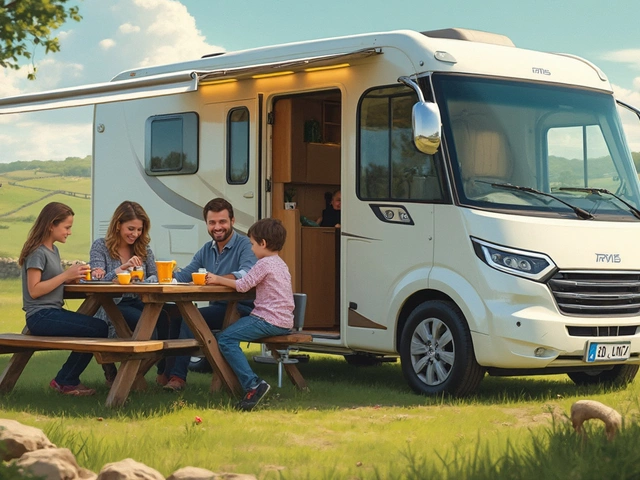The RV 333 rule isn’t rocket science—it’s all about keeping your road trip chill and your energy high. Here’s the scoop: the numbers mean drive no more than 300 miles in a day, arrive at your next spot by 3 PM, and stay at least 3 nights before moving on. Sounds basic, but this rule hits home for anyone who’s tried powering through endless highways only to crash tired at a campsite after dark.
If you’re hiring a motorhome, it’s easy to say “let’s see as much as we can,” but that mindset turns travel into a grind. The 333 rule pushes you to slow down, actually enjoy the views, and avoid rookie mistakes like rolling in late, missing campground check-ins, or setting up in the dark. So many first-timers ignore this and end up spending half their trip tired or arguing over the GPS.
- Breaking Down the RV 333 Rule
- Benefits of Following the 333 Rule
- Common Mistakes Drivers Make
- Tips for a Better Motorhome Journey
Breaking Down the RV 333 Rule
The RV 333 rule crops up again and again when you search for road trip tips. It helps people—especially those new to RV travel—keep things fun rather than exhausting. The three parts aren’t just random numbers. Each one has a purpose that directly impacts how much you enjoy your ride.
Here's the breakdown:
- 300 miles per day max: This keeps you from sitting behind the wheel for six or eight straight hours. At typical RV speeds, 300 miles is about five hours of actual driving—pretty manageable even if you’re not used to motorhomes. Fewer miles means more time for scenery, breaks, and proper meals, not just fast food and gas station snacks.
- Arrive by 3 PM: This part isn’t just about comfort; it’s super practical. Campgrounds get crowded late in the day. Arriving by three means less stress finding your pre-booked spot, more daylight to settle in, and fewer issues with park staff if you need anything. Plus, it gives you time to fix little surprises like a stubborn slide-out or a missing water hose.
- Stay at least 3 nights: Jumping from spot to spot every day gets old fast. Three nights gives you a real chance to explore, relax, do laundry, or even just sit outside and unwind. If you’re using motorhome hire, you don't want to kill half your trip checking in and out of sites or hunting down groceries every morning.
Plenty of seasoned travelers swear by the RV 333 rule for cutting down stress and making the trip feel like an actual holiday. It doesn’t mean you can never bend the rule. Some legs might be longer, and sometimes you’ll leave earlier or stay less. But if you treat 333 like your baseline, it’s much easier to avoid those long, cranky days on the road.
Benefits of Following the 333 Rule
Sticking to the RV 333 rule can seriously level up your motorhome trips, whether you’re a newbie or an old hand. The most obvious perk? Less exhaustion. Capping your drive at 300 miles means you’re not wired and cranky by the end of the day. Studies show that alertness drops after long hours on the road, and tired driving is almost as risky as distracted driving. By limiting your hours, you just make things safer for everyone.
The 3 PM arrival target is another game changer. Most campgrounds fill up by late afternoon, so rolling in before the crowd lands you better sites, way less stress, and easy check-ins. Never underestimate how much smoother things go when you’re not fumbling with hookups by flashlight.
The “stay three nights” part of the rule isn’t just about lounging around. It’s about actually enjoying the spot you picked. Rushing from place to place has you spending more time on highways and less on what you hired the motorhome for—exploring cool towns, hiking, tasting local food, or even just kicking back. The longer stay gives you time to spot all the good stuff, from hidden bakeries to sweet fishing holes, that you’d blow past if you rushed.
Here’s a quick look at why many folks swear by the 333 guideline:
- Less stress and road fatigue for the whole crew.
- Way more time to settle in, relax, and actually enjoy the destination.
- Better shot at scoring the spot you want at the campground.
- Safer driving habits that keep your trip smooth and incident-free.
- Improved relationships inside the motorhome—everyone’s less cranky!
If you’re serious about making the most of your RV 333 rule for motorhome hire, these benefits are hard to ignore. It’s simple, but it works—most travelers who try it once never go back to rushing around.
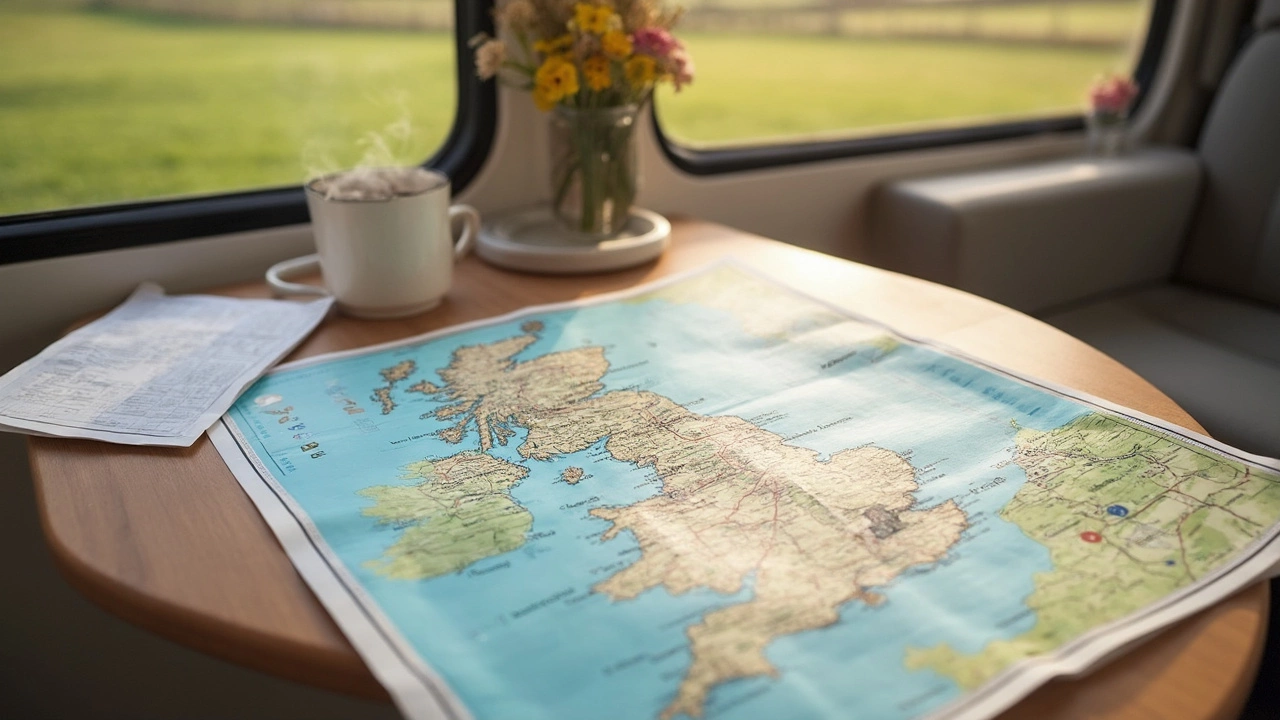
Common Mistakes Drivers Make
Even with the best intentions, a lot of folks mess up their RV trips by pushing too hard or not planning well. One of the classic slip-ups? Ignoring the RV 333 rule because you think you can handle longer days or want to tick off more stops. That usually means you’re rolling into your next campground after dark, which is just asking for stress. Setting up in low light is annoying at best—at worst, you accidentally smack into a post, annoy your neighbors, or miss out on the decent camping spots.
Another mistake is underestimating how tired you’ll get behind the wheel. Driving a motorhome isn’t like zipping down the motorway in your car. These rigs need more attention and take a lot more energy to handle, especially if the roads are bumpy or curvy. People often plan 400-500 mile days like they’re on a road trip movie montage and end up cranky and exhausted before they even unpack.
Here’s a quick breakdown of other common goofs:
- Not factoring in extra time for fuel and food stops. RVs aren’t the fastest on the uptake—count on more breaks than you’re used to.
- Booking campgrounds too close together or too far apart. Too close and you’re moving every day for no good reason. Too far and you risk getting nowhere fun.
- Skipping rest days. Without downtime, even the best trips start to feel like work. The 333 rule bakes in rest by encouraging at least three nights at each stop.
- Thinking you’ll always find a spot at the campground if you show up late. Popular sites fill up fast, especially during holidays and peak seasons.
The main takeaway? Try not to overestimate your stamina or underestimate the time everything takes. Stick to practical distances and plan real breaks so you and your crew don’t burn out—or end up bickering through the best parts of your trip.
Tips for a Better Motorhome Journey
If you want to get the most from the RV 333 rule, a few smart moves make all the difference when hiring and driving a motorhome. Let’s talk through some tips that cover comfort, efficiency, and enjoying the ride without drama.
First, always pre-book your campgrounds, especially during holidays or busy seasons. Sites fill up fast, and rolling the dice after a long drive sets you up for frustration. According to a 2024 GoRVing survey, 68% of first-time renters wished they’d booked more stops in advance to avoid last-minute stress. Use apps like Campendium or Park4Night for reviews and availability.
- Plan your route—but leave wiggle room. It’s tempting to fill every day, but weather, traffic, or just finding a cool diner can shake things up. Have a basic plan but be ready to adapt.
- Double-check what’s included with your hire. Extra mileage can mean extra fees. Some rental companies cap daily miles and charge if you go over. Ask up front.
- Pack smart and light. Only bring essentials—motorhomes have limited storage. Keep heavy stuff low to the ground for safer driving.
- Set up before dark. Even if the 333 rule puts you in early, delays happen. Driving or parking a big RV in the dark stinks, especially for newbies.
- Share the driving if you can. Fatigue creeps up fast, and two sets of eyes are better than one for navigating narrow roads or city traffic.
Want to know why these tips matter? Here’s a table comparing RV accident stats by arrival time, pulled from the NHTSA’s 2023 report:
| Arrival Time at Campground | Accident Rate per 10,000 Trips |
|---|---|
| Before 3 PM | 2.1 |
| 3-7 PM | 4.3 |
| After 7 PM | 6.8 |
Makes you rethink late arrivals, right? Sticking to the 333 rule means you’re actually safer and more likely to snag a good campsite. Plus, you get more daylight to enjoy the area and settle in without a rush.
Finally, do a quick walk-around every morning. Check your tires, look for leaks, and make sure nothing’s loose. A few minutes can save you a wrecked tire or lost mirror miles down the road. Once you get in the swing of it, you’ll find your trip flows way smoother—and you might just start looking forward to each leg instead of dreading the next drive.
